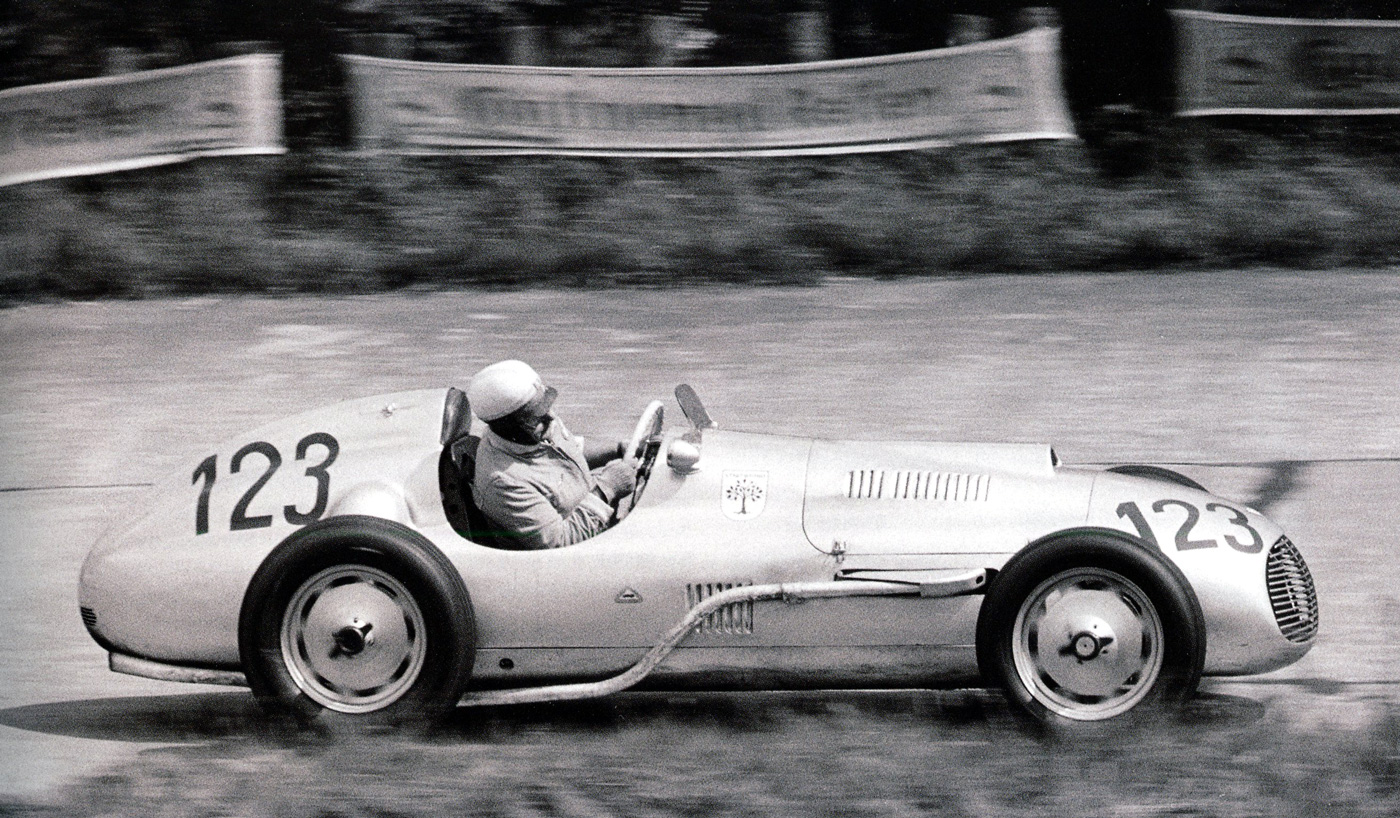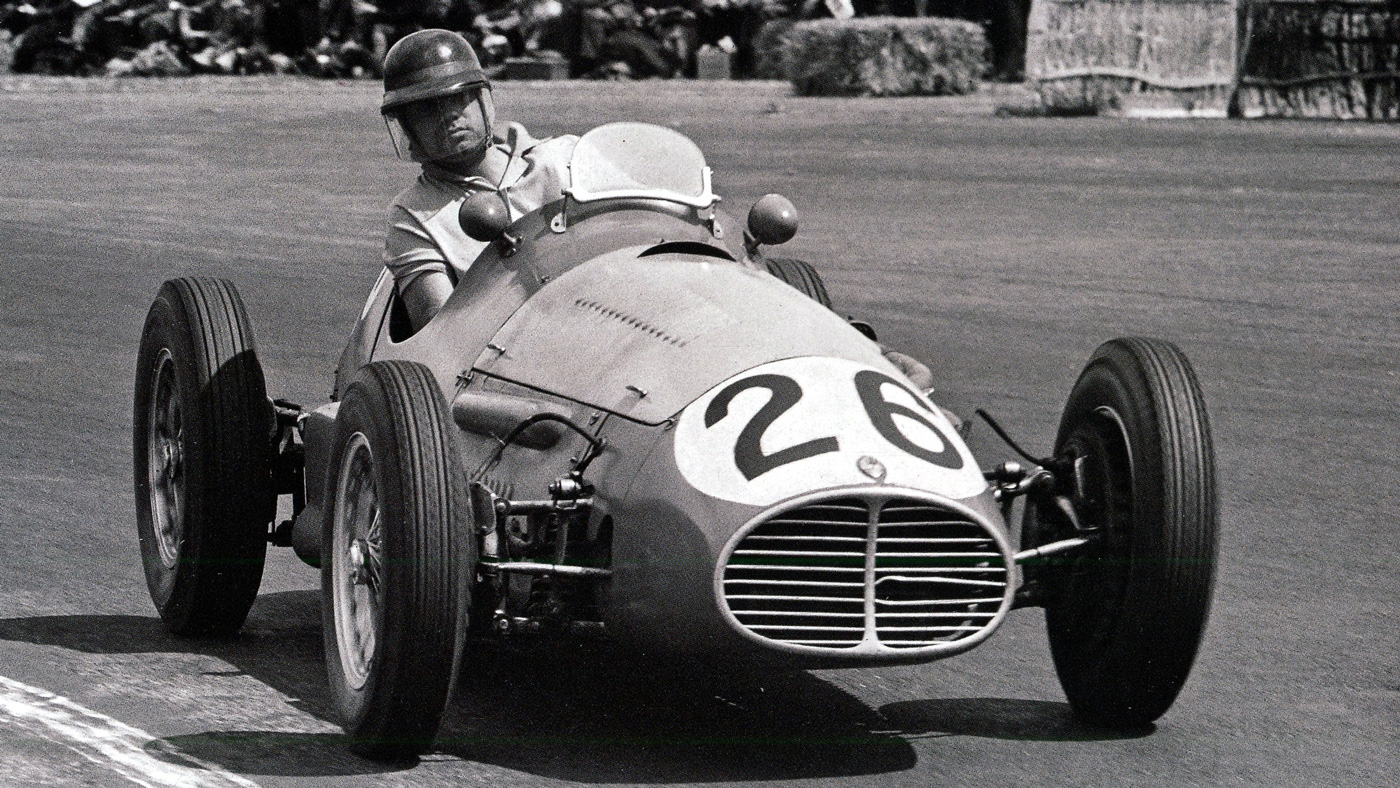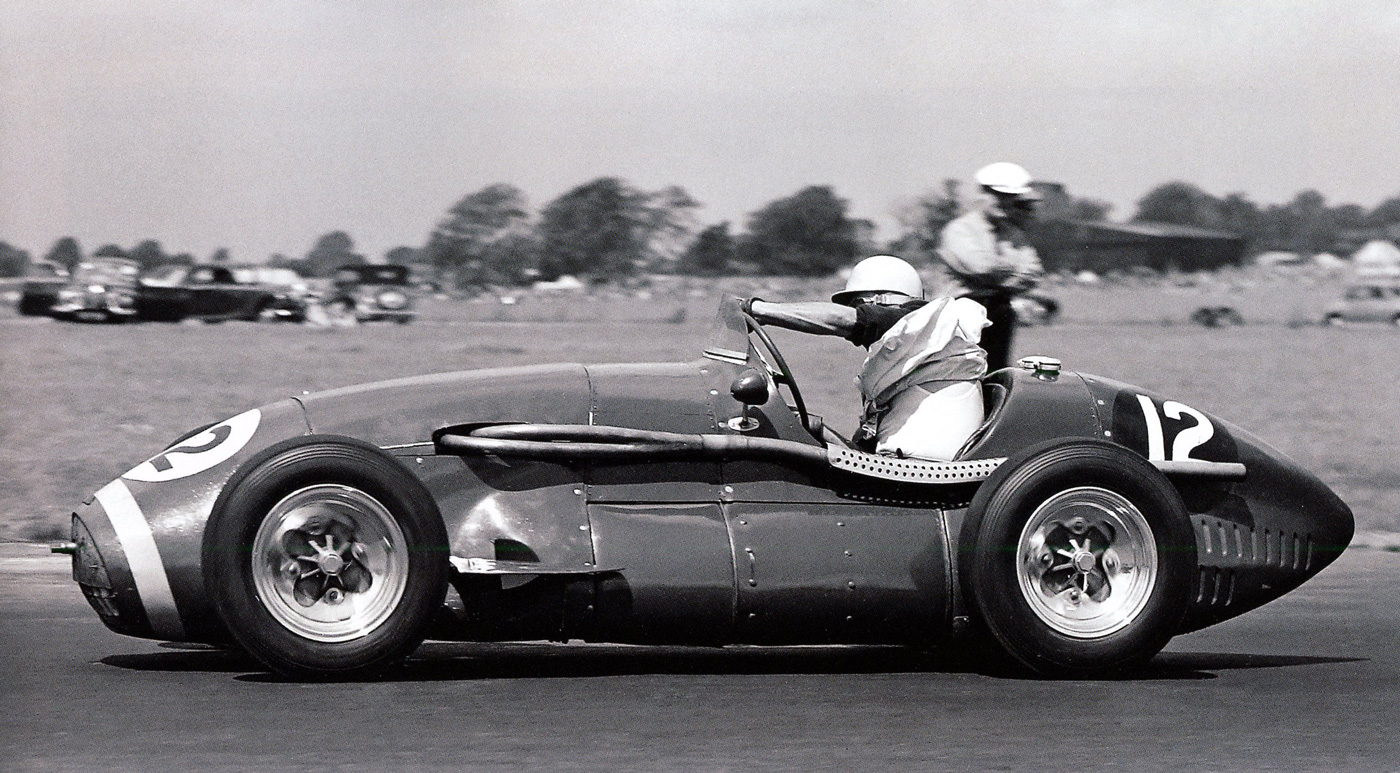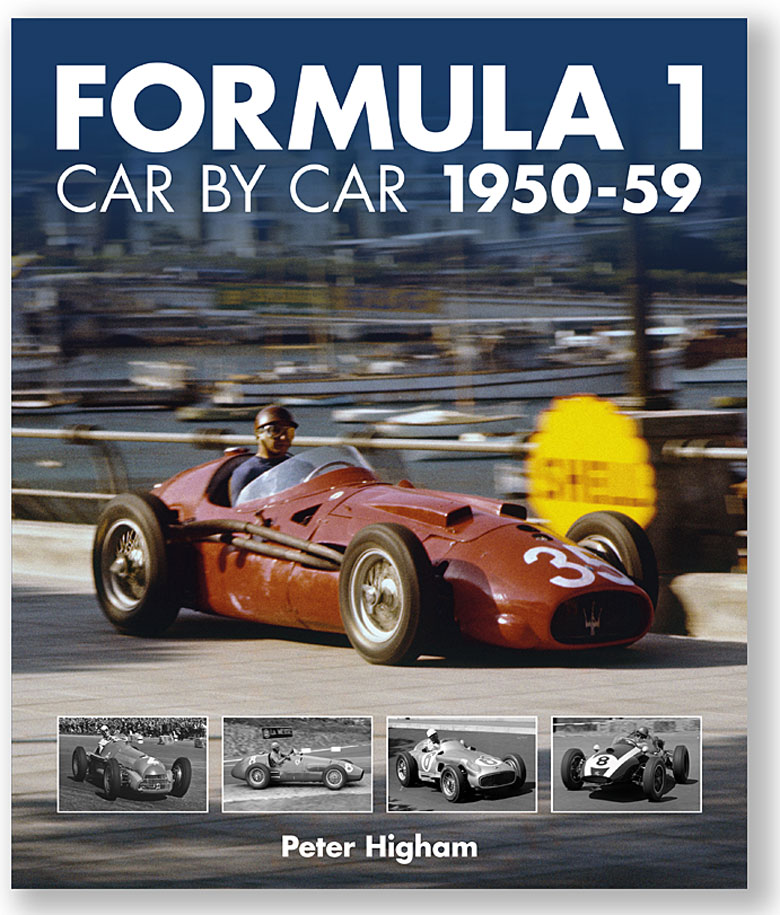Review by Pete Vack
Photos from the book
Formula 1 Car by Car 1950-1959
by Peter Higham
Evro Publishing, 2020
ISBN 978-1-910505-44-1
600 black and white and color photos, 304 Pages
Format: 280x235mm, hardback
UK price: £50.00
U.S. price $79.95
US residents order from Quarto
UK Residents order from Evro
Review by Pete Vack
This is volume 1 of a four part Evro publishing series on Formula 1, by decade, which so far, takes us through to 1989. We opted to review only the first volume, which is best suited to our readership.
There are hundreds of books published about Formula 1, yet most draw from the same well of historical facts and photos. But now, Evro Publishing’s Formula 1, Car by Car, 1950-1959, authored by Peter Higham, does an admirable job of providing new and interesting information and anecdotes with over 600 of rare and restored photographs.

For 1950, along with Scuderia Ambrosiana, Scuderia Enrico Platé and Scuderia Achille Varzi, Scuderia Milano joined the new F1 circus with cars from Maserati, itself running a factory team. Here, Scuderia Milano’s modified 4CLT/50 Milano is seen at the Swiss Grand Prix, with Felice Bonetto making one of his rare F1 appearances.
Founded in 2014, and known for its quality books, Evro has won a Royal Automobile Club Motoring Book of the Year award five times already (the latest being Pete Lyons’ book about the Shadow). Peter Higham too, is superbly qualified to undertake authorship, having worked for Haymarket Media, was a director of the LAT motor racing photo archive, and a columnist for both Autosport and Motorsport. And when Judy Stropus, now acting as the US PR rep for Evro, told me about the series I thought I’d give one a shot.

Gordinis…rarely have we seen so many between one set of covers. Here is Johnny Claes in his Simca Gordini 15 at the 1952 British Grand Prix, where he finished 15th under the colors of Ecurie Belge.
The title is a catchy one: Formula 1 Car By Car. Now let’s think about that for a second. What might one expect from such a title? Car by car, beginning with Alfa and ending with whatever, probably in alphabetical order, listed by serial number, followed by the races that particular chassis number took part in between 1950 and 1959 with drivers and results? Sounds good!
However, Higham’s brief – the basic outline for the series as requested by the publisher – was to “…include a photo and race details of every driver in every different type of car to have raced in the F1 World Championship,” according to Higham. To include chassis number information – all too often incomplete and inaccurate – would result in a much larger book.

1952: The year of Ascari and Ferrari, no participation from the Maserati factory, but at a few events, many odds and ends from Germany as they pick up the pieces from WWII. Veritas, AFM, and a number of interesting BMW specials found their way to the grid at the German GP. Above, Willi Heeks, with the AFM 8-BMW with a V-8 built by Richard Kuchen “to an Abarth design”. Something to check on, perhaps?
So, no car by car, chassis by chassis in a particular order. Then how is the book organized? First, by year. Higham begins each chapter/year with a brief two- or three-page description of the main events that shaped the year. But there is really no good way of telling the story by car, team, or people in an orderly fashion. For the year 1950, Higham begins with Alfa Corse, the team, then it’s off to visit Scuderia Ferrari and review their results for the year. Up next in the subheads is Peter Whitehead, “the first privateer to buy and F1 Ferrari.” Automobiles Talbot Darracq is next up, followed by Raymond Sommer, Ecurie Rosier, Ecurie Belge and ‘Other Lago Talbot Privateers.’ Wrote Higham, “The team entries in the other [three]volumes are ordered in constructors’ championship order, with works and privateers grouped together.” This method could not be applied to the 1950s however, as there was no Constructors’ Championship.

And rarely do we see a photo of Onofre Marimon, a young Argentine with great promise, coached by Fangio and Gonzales. Here he is aboard the 1953 Maserati A6GCM (A6SSG) at the British Grand Prix. Marimon was killed at the Nurburgring in 1954.
Within those parameters then, Higham wisely includes the non-championship F1 events in his text, as well as F2 cars which competed in F1 events, giving us a much greater depth and understanding of the era. Higham does a good job with each year’s history, and has a good grasp on everything that went on with the cars, drivers, and teams throughout the year and addresses each car in terms of technical specifications. He adds many lesser known facts along the way; long forgotten was the effort by Clemente Biondetti to field a Formula 1 car with a 166 Ferrari chassis using a 3.4 liter Jaguar engine, a liter off the mark. In further detail Higham notes that in 1953 the Vicomtesse de Walckiers entered a Simca-Gordini for Georges Berger in a few Belgian races. Much to his credit, Higham’s text is full of these anorak gems, and the book is better for it. This reviewer learned something new in every chapter.

In 1953 the Lea-Francis powered Connaught was almost competitive. The team was headed by Roy Salvadori, above at the British Grand Prix. The photo also a good example of the excellent choice of images seen throughout the book, restored and printed on glossy paper. Even if seen previously, the photos were probably smaller and on pulp grade paper.
After each chapter is a list of drivers and the cars they drove in the Championship events. Then a list of all the winners of Formula races for that year including non-championship events; unlike today, in those years there were many non championship F1 events. That too, was most welcome. Even more welcome was a decent index; people, cars, and organizations are included in the index. There is also a short but useful bibliography, but no annotations.

Color photos were rarely used in contemporary auto magazines due to cost, and therefore most photographers shot in black and white only. Higham has procured a number of color images from 1955 onward. Above, the straight eight Gordini with Robert Manzon driving is trying hard at the 1956 French Grand Prix, in a beautiful shade of French racing blue.
In addition to a very complete survey of the cars, the accompanying photos make this book particularly valuable. The author and his team at Evro have found hundreds of photos from Motorsport Images (www.motorsportimages.com), a London based archive that boasts the largest collection of motorsports picture collections in the world. Gaps were filled by REVS, the Klemantaski collection and Willy Iacona. The authors bring together the images previously unused or scattered over a variety of magazines and more specific marque books, touched them up and presented them on excellent paper. Nowhere else, for example, has this reviewer seen so many great images of the Alta, Gordini, HMW, Plate and other Maseratis and even the more common Ferrari 500s as owned by a variety of individuals or small teams. Plus, from 1955 on, a good percentage of photos are in color.

Higham includes F2 cars when entered in F1 events. At Monaco, 1959, this Porsche is the factory RSK single seater Formula 2 car, driven by von Trips. He screwed up at St. Devote, eliminating the other three F2s in the process.
Bottom line: Interesting text with many new bits of information written in an engaging manner; wonderful selection of photos, particularly of the lesser-known teams and cars. Great for research and study and an excellent value for the money. Highly recommended.

